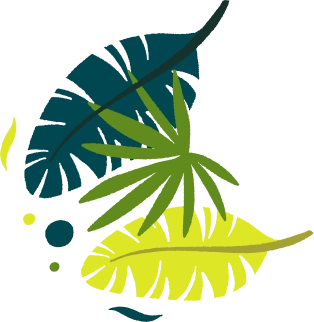


I finally made it to Ha Giang at the very top of Vietnam - after travelling almost the whole country- and the scenery here did not disappoint. This rugged mountainous province is famous for the Ha Giang Loop, a multi-day motorcycle road trip through emerald valleys, terraced fields and dramatic limestone peaks.
The loop itself typically takes 3-5 days to complete, winding north from Ha Giang City through Quan Ba, Yen Minh, Đồng Văn and Mèo Vạc districts. The road conditions can be challenging, so many travelers hire an “Easy Rider” guide or driver, but it can still be done as long as you have some driving experience in the mountains.
One of the highlights on the loop is Ma Pi Leng Pass, often called the “Road of Happiness”. This twisting mountain pass offers jaw-dropping views down to the Nho Que River (the gorge is pictured above). Boat rides or bamboo raft trips on the emerald-green Nho Que River are a popular stop.
Ma Pi Leng Pass
Another must-see is the Dong Van Karst Plateau Geopark a UNESCO site, with surreal rocky peaks and traditional H’Mong villages.
(Note: Ha Giang Province plans a small conservation fee for overnight stays in the plateau area - about 30,000 VND per night for adults.)
Don’t miss the Lung Cu Flag Tower, Vietnam’s northernmost landmark where a huge flag flies atop Dragon Mountain. Entrance to Lung Cú is roughly 25,000 VND (plus ~15,000 VND if you take the little electric car to the flagpole).
In Dong Van town you can explore the old quarter’s French-era architecture and the Vuong Family Mansion (King Mèo’s Palace) at Sa Phìn, a 19th-century H’Mong royal home.
Nearby, theQuan Ba “Heaven’s Gate” viewpoint offers a panoramic vista of the Twin Mountains which is well worth the 20,000-40,000 VND entrance fee.
The Ha Giang Loop: A 350+ km ride through pristine highland scenery. Plan 3-4 days (or more) for the full loop.
Ma Pi Leng Pass & Nho Que River: A famous cliffside road and canyon where you can stop for photos or a river cruise.
Dong Van Karst Plateau: UNESCO Global Geopark with rocky peaks and ethnic minority villages. (Expect a small conservation/entry fee if you stay overnight in the area.)
Lung Cu Flag Tower
Lung Cu Flag Tower: Climb 389 steps up the mountain for the national flag and China border views (ticket ~25,000 VND).
Vuong King’s Palace (Sa Phìn): A historic H’Mong mansion showing Chinese-influenced architecture (small entry fee).
Quan Ba Heaven Gate: Scenic overlook of the “Fairy Bosom” twin hills. Great photo spot.
View From Quan Ba Heaven Gate
Beyond the well trodden Loop, Ha Giang has quiet corners that feel untouched. In Du Gia Village (about 100 km north of Ha Giang City) you’ll find serene forests, terraced fields and affordable homestays - an ideal place to slow down. We loved being the only tourists at sunset, watching mist drift over green hills. You can also join local families to work in cornfields or cook with them at the homestay (homestay meals are communal and inexpensive).
Ethnic Markets: Don’t miss the vibrant weekly markets, which are as much cultural events as shopping spots.
Dong Van Market (Sunday) and Meo Vac Market (Sunday) are bustling gatherings of H’Mông, Tày, Dao and other ethnic groups selling produce, textiles and food. Quan Ba Market (Saturday morning) and Yên Minh Market (Sunday) are similar cultural bonanzas.
These markets are perfect for seeing locals in traditional dress and tasting fresh snacks like sticky rice cakes or thang co (the hearty local stew).
Dong Van Market
Hidden Villages: Explore offshoots of the main loop. For example, the village of Thon Tha near Ha Giang City has a pretty waterfall and often-open local kitchen where you can have lunch.
Quaint H’Mông villages like Lũng Tả or Phó Bảng (famous for old houses) are peaceful stops. In some villages we spontaneously joined farmers cooking corn on a fire - an unforgettable memory of Ha Giang hospitality.
Quan Ba “Fairy Bosom” Twin Mountains: When you crest the pass at Quan Ba, stop at the park for a close-up of these two rounded peaks (often shrouded in clouds). It’s a great, less-crowded viewpoint.
Quan Ba Twin Peak Mountians of Ha Giang, Vietnam
Ha Giang’s highland cuisine is unique and delicious. In homestays and small eateries you’ll find regional specialties like xoi ngu sac (five-colored sticky rice) and thang co (a rich horse- or buffalo-meat stew simmered with spices).
Two must-try dishes are chao au tau, a tuber porridge with pork and mushrooms, and thit lon cap nach, the famous free-range hill pork. Sip on a glass of ruou ngo (Meo wine) - strong corn wine brewed with herbs - often offered by friendly hosts. Meals at local spots are very cheap (around $1-3 / 25,000-75,000 VND per dish).
Note that most family-run restaurants are cash-only (they specialize in a few dishes and often have only Vietnamese menus).
We found some cozy places in Ha Giang City like a pho stall serving pho chua (sour noodle soup) and even a tiny wood-fired pizza café for a western fix!
the Famous Pho Chua Soup Served in Vietnam
Getting There: Ha Giang City is ~180 km north of Hanoi. The easiest way is an overnight sleeper bus (6-7 hours).
Several companies run daily routes from My Dinh or Gia Lâm stations. Fares are roughly 200-700k VND ($10-30) depending on bus quality. You can also hire a private car or motorbike if you want more flexibility.
Motorbike vs Car: The classic loop is done by motorbike. You can rent a bike in Ha Giang City for about 200,000 VND per day (fuel ~50k/day).
If you’re not a confident rider, consider hiring a local “Easy Rider” guide - it costs only about 700k VND more for a 3-day trip and adds safety. Alternatively, some travelers do the loop by jeep tour.
Road Conditions: The mountain roads are narrow with steep cliffs. During the dry season (winter & spring) they’re mostly paved, but in the rainy season (June-Aug) expect potholes and mud.
Go slowly on curves and watch for landslides in bad weather. Always wear good rain gear and helmet.
Cash & Language: English is rare outside tourist HQ, so a few Vietnamese phrases and Google Translate help. Bring enough cash: ATMs exist in Ha Giang and some towns but not everywhere.
Almost no roadside eatery or homestay takes cards.
Packing: Even in warm seasons, mornings and evenings can be chilly up here (especially above 1,000 m).
Pack layers and a light jacket. Sunscreen and sunglasses are important for high-altitude sun. Also download offline maps - signal is spotty on the loop.
Paperwork: Technically you need an International Driving Permit to ride in Vietnam. We carried ours to avoid fines, and our guesthouse reminded us about it. (It’s cheap to get in most countries.)
Motorbike Rental: ~200,000 VND/day (most rentals include a helmet and basic insurance). Fuel is ~50k VND per day.
Transport: Sleeper bus from Hanoi to Ha Giang ~200-700k VND (book ahead in peak seasons). EasyRider tour packages start around 3.5-4.2 million VND for 3 days (self-drive vs guided).
Entrance Fees: Lung Cú Flag Tower ~25,000 VND (adult). Many local attractions charge small fees (Vuong King’s House, caves, etc. ~15-20k VND). The Quan Ba Heaven Gate viewpoint is about 20,000 VND. Note: there’s now a Dong Van Plateau conservation fee of ~30,000 VND/night for each adult stay in the plateau area.
Food & Stay: Simple restaurant meals or home-cooked lunches cost ~30k-50k VND each (USD1-2). Homestays range from 200k to 400k VND per person per night (including dinner & breakfast) in off-season, more in high season. Luxurious “mountain view” hotels can be double that.
Is the Ha Giang Loop safe?
It can be challenging due to winding mountain roads and weather. Many travelers hire an experienced driver (“Easy Rider”) for safety, as the roads have steep drop-offs. As one blogger advises, the loop is “relatively safe with an easy rider but can be dangerous if you attempt it on your own”. If you ride yourself, go very slowly on curves, keep distance from trucks, and avoid riding at night or in heavy rain.
How many days do I need for Ha Giang?
Most people spend 3-5 days on the Ha Giang circuit. Doing it in 3 days (2 nights) is doable if you start early and ride hard each day. However, 4-5 days allows a more relaxed pace with time for side trips (like Du Già or Hoàng Su Phì rice fields) and rest. We personally took 4 days and felt it was much more enjoyable.
When is the best time to visit Ha Giang?
The most stable weather is in the dry seasons: March-May (spring) and September-November (early fall). Late September to early October is especially beautiful, when golden rice terraces (above Hoàng Su Phì/Hoàng Su Phì town) are ripe.
Be aware that from June to mid-August, heavy rains and occasional storms can make riding risky, and from December to January it can get quite cold and foggy in the mountains.
How do I get to Ha Giang? There are no trains or flights. The easiest way from Hanoi is a direct sleeper bus (about 6-7 hours). Buses leave Hanoi’s My Đình or Gia Lâm stations daily.
If you’re coming from Lao Cai/Sapa or other northern towns, local buses run frequently. Once in Ha Giang City, most loop tours start immediately on the outskirts - you can begin by heading up to Đồng Văn or Quan Ba on your bike.
Get the latest information about our tours and special offers!